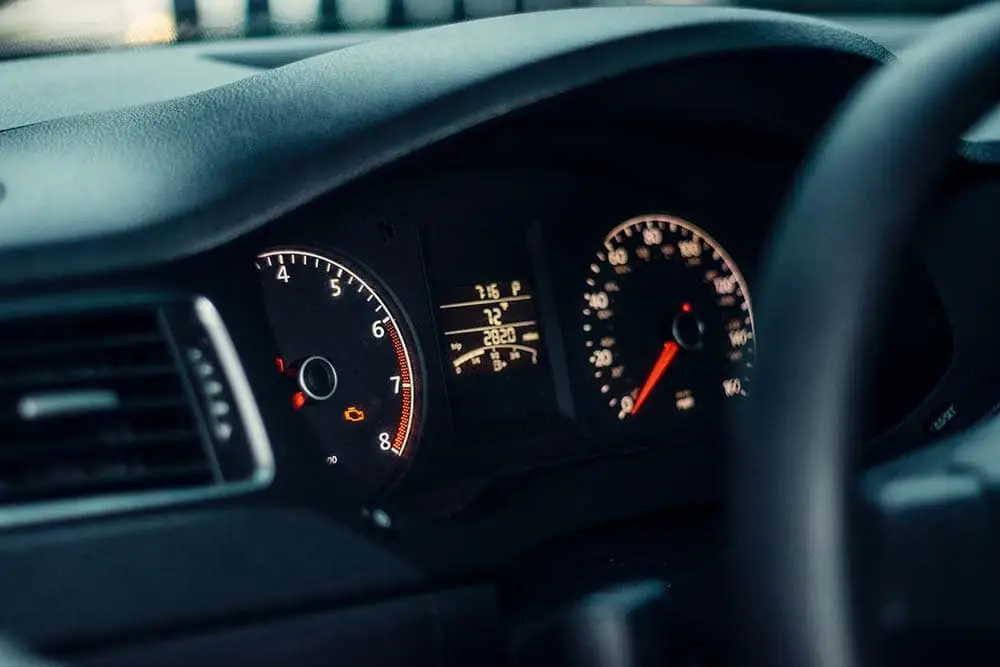It should come as no surprise that as technology has advanced, vehicle manufacturing has improved to help ensure the safety of drivers, passengers, and everyone else on the road. That’s why it is critical to respect your vehicle’s warning lights when they illuminate on the console.
Ignoring warning lights in your vehicle can be costly and lead to more serious issues. Computers in cars and other vehicles are designed to make driving easier while ensuring vehicle safety.
At Car Credit, we encourage you to bring your car in for service when a warning light appears.
What Do Dashboard Lights Mean in a Car?

While it is true that you do not need to be a professional to repair and maintain your vehicle, it’s smart to be as knowledgeable as possible when it comes to seeing a light on your car’s dashboard.
According to a recent study, approximately 96% of people are unaware of what the brake warning light looks like, and drivers aged 18 to 24 take an average of 10 days to take their vehicle to a mechanic.
The survey also discovered that drivers need to seriously monitor tire pressure, coolant, battery, and airbag warning lights, with less than 10% of survey respondents considering these lights important.
Modern automobiles are massive computers with numerous sensors and monitoring systems. These sensor readings, such as your RPMs and MPH, are constantly displayed. However, your dashboard can also provide information about your vehicle’s performance without requiring you to look under the hood.
When a problem arises, indicator lights alert you. Every car, truck, or SUV has advanced technology to monitor its performance. It can monitor various vehicle components, including tires and emergency brakes, engine components, and fluid levels.
Why you should pay attention to warning lights
Warning lights are intended to alert you to problems with your vehicle. It’s a common misconception that some lights don’t require immediate attention. The truth is that failure to pay attention to car warning lights can result in more expensive repairs in the future or breaking down on the highway and leaving you stranded.
Fixes for common warning light issues can range from minor to significant. Knowing what the various dashboard indicators mean and how to perform repairs will keep you safe. When you act quickly, you will keep your engine and car components in good condition and save money.
When you notice a car warning light illuminated, take it to a mechanic who can expertly diagnose and repair the problem.
- Airbag Warning Light
A typical airbag light icon depicts a person sitting in a car seat with an airbag deployed in front of them. If this car warning light illuminates, it indicates that one of your airbags or the entire system is malfunctioning. This is an emergency that must be addressed right away. A car accident without airbags could have disastrous consequences.
- Engine Warning Light
If an orange engine icon appears on your dashboard, it means the engine isn’t working properly. This light could appear for various reasons, ranging from minor flaws like a loose gas cap to major issues like a damaged converter. A proper diagnosis from a qualified car mechanic is required to ensure that the engine problem is resolved.
- Fuel warning light
We’ve all been guilty of leaving the gas light on for too long, but that fuel warning light is really an important warning sign to pay attention to. When low fuel levels occur, you may become stranded. Rather than waiting for the light, the best thing you can do is keep your gas tank topped up.
- Battery Light
The battery light icon is a box with a plus and minus symbol. This indicates a problem with the car’s battery or charging system. This light could illuminate for various reasons, including a broken alternator belt or a damaged battery cable. It’s best to take it to a mechanic to figure out what’s causing the battery to fail.
- Oil Pressure Warning Light
The lit-up oil can icon indicates that your vehicle is experiencing low oil pressure. This emergency must be addressed immediately because it can cause engine damage if left untreated. It is not always easy to understand the cause of this issue, as with other car warning lights. It could be due to low oil levels or a malfunctioning oil pump.
- The Temperature of the engine
This light is also known as a thermometer light. The thermometer light indicates that the engine in your car is now overheating. If this light turns on, find a safe place to park your car and turn off the engine. Engine overheating is a serious issue, and driving with an overheated engine can cause severe damage to your vehicle. Allow your engine to cool before having it checked as soon as possible.
- Tire Pressure
The computer system in your car can comprehend the operation of the entire vehicle. For example, the tire pressure monitoring system can determine whether the tires are underinflated. Running over a sharp object, extreme wear on the rubber or cold weather can all cause low pressure.
Because the tires are the point of contact between the car and the road, maintaining the proper pressure in all four tires is critical. When there are issues with the tire pressure, it can cause the tire to make unstable contact with the ground. In the worst-case scenario, low tire pressure can lead to an accident.
The Car Credit Limited Warranty Helps
Responding promptly to warning lights in your car may help you extend the life of your vehicle and save lives. Always pay attention to and never disregard your warning lights. You never know what will happen, so safety is most important.
Car Credit offers a limited 2-year warranty to keep your car safely on the road. If you notice a warning light on your dashboard, we encourage you to bring your vehicle to the experts at one of Car Credit’s locations immediately!

